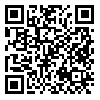1- Departeman of private law,SR.C.,Islamick Azad University,Tehran,Iran.
2- Professor in Private Law, Faculty of Law, Mofid University, Qom, Iran ,rabiaeskini1@gmail.com
3- Associate Professor in Private Law, Faculty of Law and Political Sciences, Tehran University, Tehran, Iran
2- Professor in Private Law, Faculty of Law, Mofid University, Qom, Iran ,
3- Associate Professor in Private Law, Faculty of Law and Political Sciences, Tehran University, Tehran, Iran
Abstract: (402 Views)
Several factors play a role in the realization of conflict of jurisdiction in judicial proceedings and arbitration. In this study, with the aim of examining the role of the aforementioned factors, a comparative study of the approaches of the legal systems of England and Iran has been conducted using an analytical-descriptive method. Based on the studies conducted, it can be said that the arbitration clause or agreement, ADR agreement, unilateral and multilateral clauses, tactics used by the litigants in the proceedings, public order, and issue preclusion are the most important factors affecting the conflict of jurisdiction that can cause major disruption in the arbitration and proceedings process. In the English legal system, by examining the existing judicial practice and legal regulations, it is concluded that an attempt has been made to deal with the aforementioned factors in a way that reduces the impact of these factors on the realization of conflict of jurisdiction. In the Iranian legal system, there are no specific legal regulations in this regard, and the judicial practice approach in this regard is not clear, which makes the challenge of realizing conflict of jurisdiction more difficult. In this article, by examining the aforementioned factors in the legal systems of England and Iran, while explaining the role of the aforementioned factors in creating conflicts of jurisdiction, an attempt has been made to explain the gaps in the Iranian legal system.
Keywords: Conflict of Jurisdiction, Arbitration Agreement, Judicial Proceedings, Tactics, Public Order, Issue Preclusion
Article Type: Original Research |
Subject:
Comparative Law
Received: 2024/04/12 | Accepted: 2025/01/26
Received: 2024/04/12 | Accepted: 2025/01/26
Send email to the article author
| Rights and permissions | |
 |
This work is licensed under a Creative Commons Attribution-NonCommercial 4.0 International License. |







